Product Overview
A Coho (Silver) Salmontrophy fish mount from Gray Taxidermy is handcrafted in the U.S. We combine over fifty years of experience and skilled craftsmanship to ensure that your custom trophy mount exceeds your expectations of what a perfect custom fish mount should look like.
Our skilled artists take pride in capturing the rich beauty and realism of nature that each unique marine species bring. A fish mount from Gray Taxidermy will capture and commemorate a memory of a life time. We are able to transform raw materials into the ultimate representation of an angler's most notable achievement. Great attention to detail and true craftsmanship is our motto while we continue to serve customers around the world. Gray Taxidermy goes to great lengths to ensure the precise color and characteristics are resembled in your custom fish mount.
Before leaving our facility, each custom fish mount is thoroughly inspected to ensure our goal of 100% customer satisfaction.
If you want to complete your trophy wall with a unique action scene by adding baitfish along your mount, we have a variety of baitfish mounts to choose from.
Product Specs:
- Available Sizes: 21" - 57"
- Details: Fired-Enamel Glass Eye
- Product Options: Wood Plaque, Custom Base, 360°
-
We also offer elegant solid wood plaques to accompany yor trophy mount. Includes traditional wood plaque with sublimated personalized information. Just ask for more information
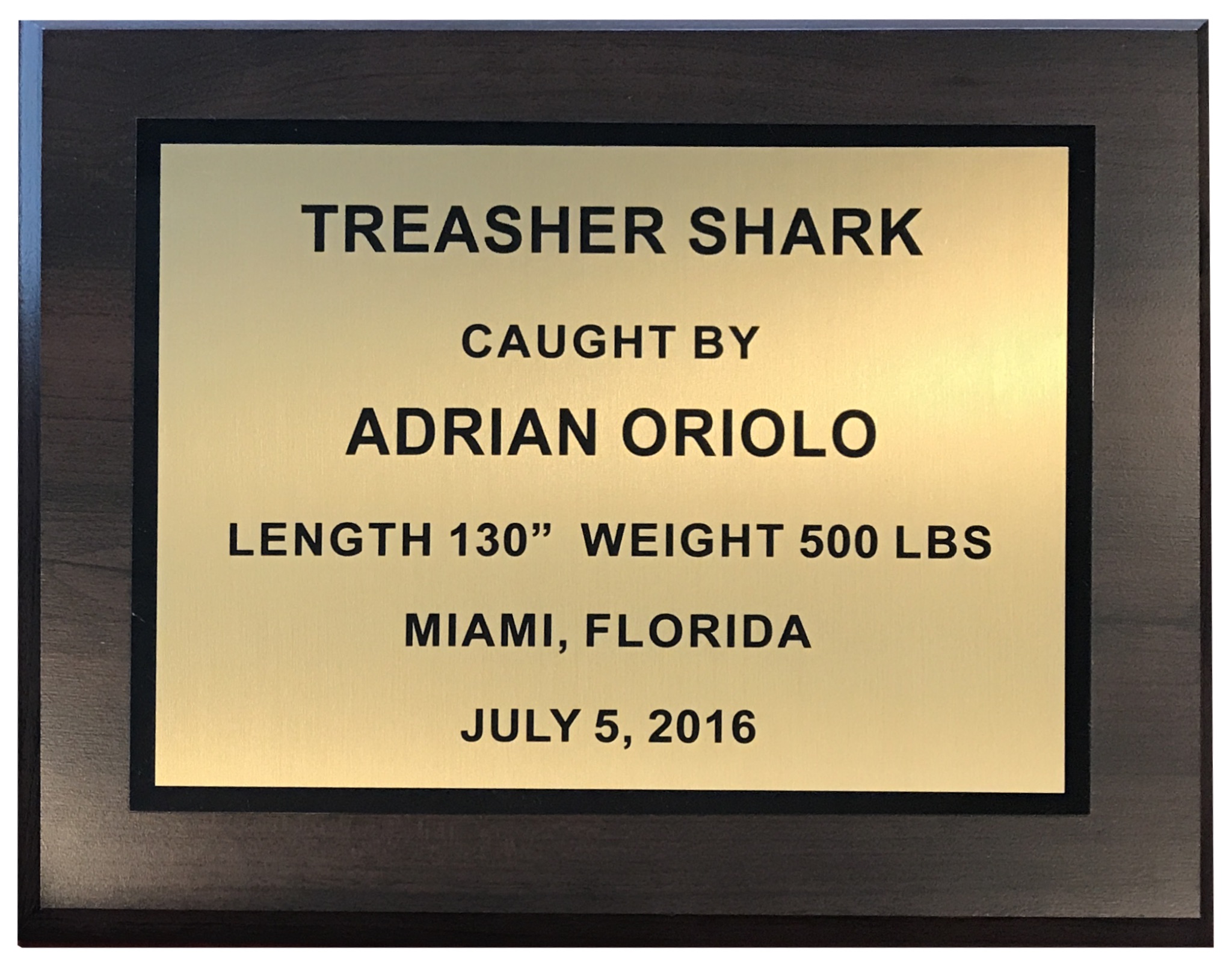
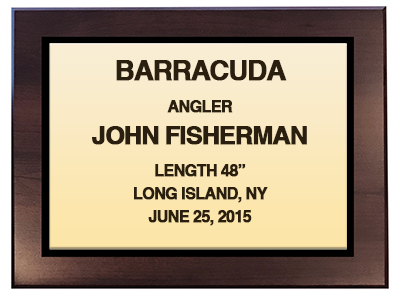 15 in x 12 in or 10 in x 8 in personalized wood plaque.
15 in x 12 in or 10 in x 8 in personalized wood plaque.
Color: Gold
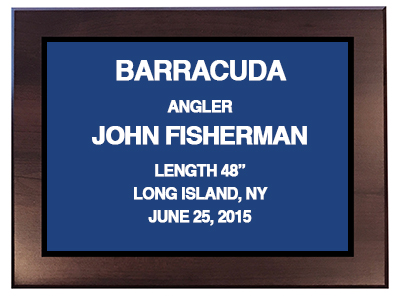 15 in x 12 in or 10 in x 8 in personalized wood plaque.
15 in x 12 in or 10 in x 8 in personalized wood plaque.
Color: BlueAvailable for all fish species
Species Information
Scientific Name: Oncorhynchus kisutch
Average Weight: Average 8 pounds (3.6 kg), but can weigh as much as 35 pounds (16 kg)
Location & Habitat: The species was historically distributed throughout the North Pacific Ocean from central California to Point Hope, Alaska, through the Aleutian Islands, and from the Anadyr River, Russia, south to Hokkaido, Japan. Coho probably inhabited most coastal streams in Washington, Oregon, and central and northern California.
Coho spend approximately the first half of their life cycle rearing and feeding in streams and small freshwater tributaries. Spawning habitat is small streams with stable gravel substrates. The remainder of the life cycle is spent foraging in estuarine and marine waters of the Pacific Ocean.
Younger individuals prefer shallower water. Older and larger flathead catfish stay in deeper waters during the daylight hours, and move into shallower water at night. They remain near or under cover, including fallen trees, logs, brush piles, and river banks. A log that is 5 m long is large enough to provide enough cover for one large adult flathead catfish.
Description: Coho salmon have dark metallic blue or greenish backs with silver sides and a light belly and there are small black spots on the back and upper lobe of the tail while in the ocean. The gumline in the lower jaw has lighter pigment than does the Chinook salmon. Spawning fish in inland rivers are dark with reddish-maroon coloration on the sides.
Coho salmon adults migrate from a marine environment into freshwater streams and rivers of their birth in order to mate (called anadromy). They spawn only once and then die (called semelparity). Adults return to their stream of origin to spawn and die, usually at around three years old. Some precocious males known as "jacks" return as two-year-old spawners. Spawning males develop a strongly hooked snout and large teeth. Females prepare several redds (nests) where the eggs will remain for 6-7 weeks until they hatch.



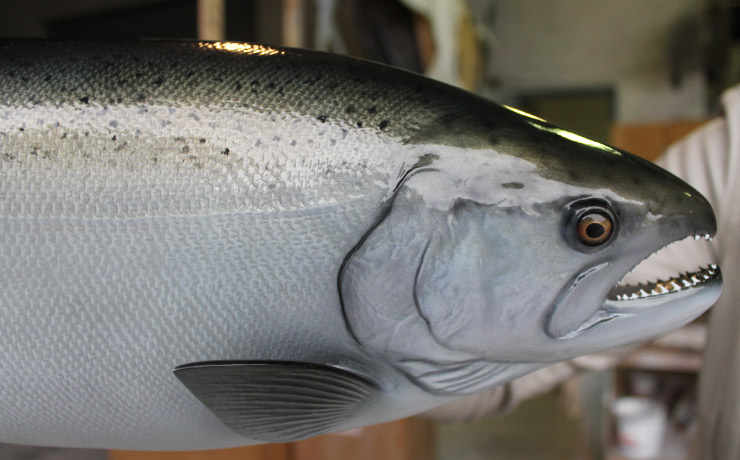
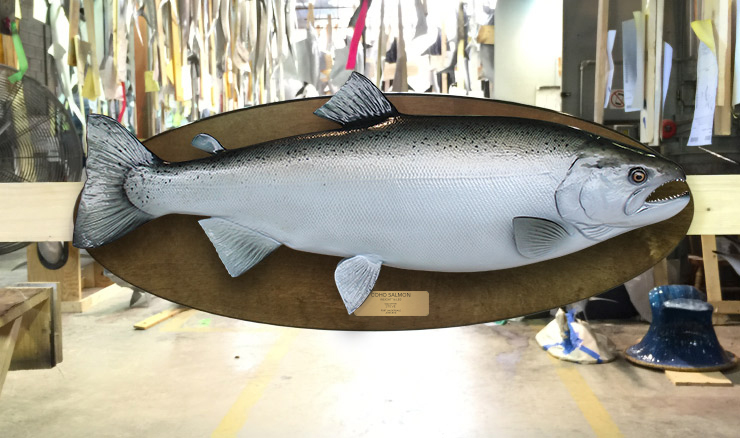
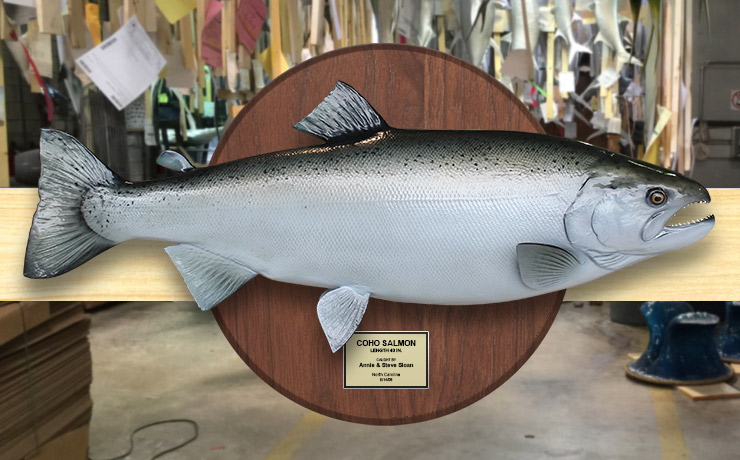

Call Now: 800.452.5501